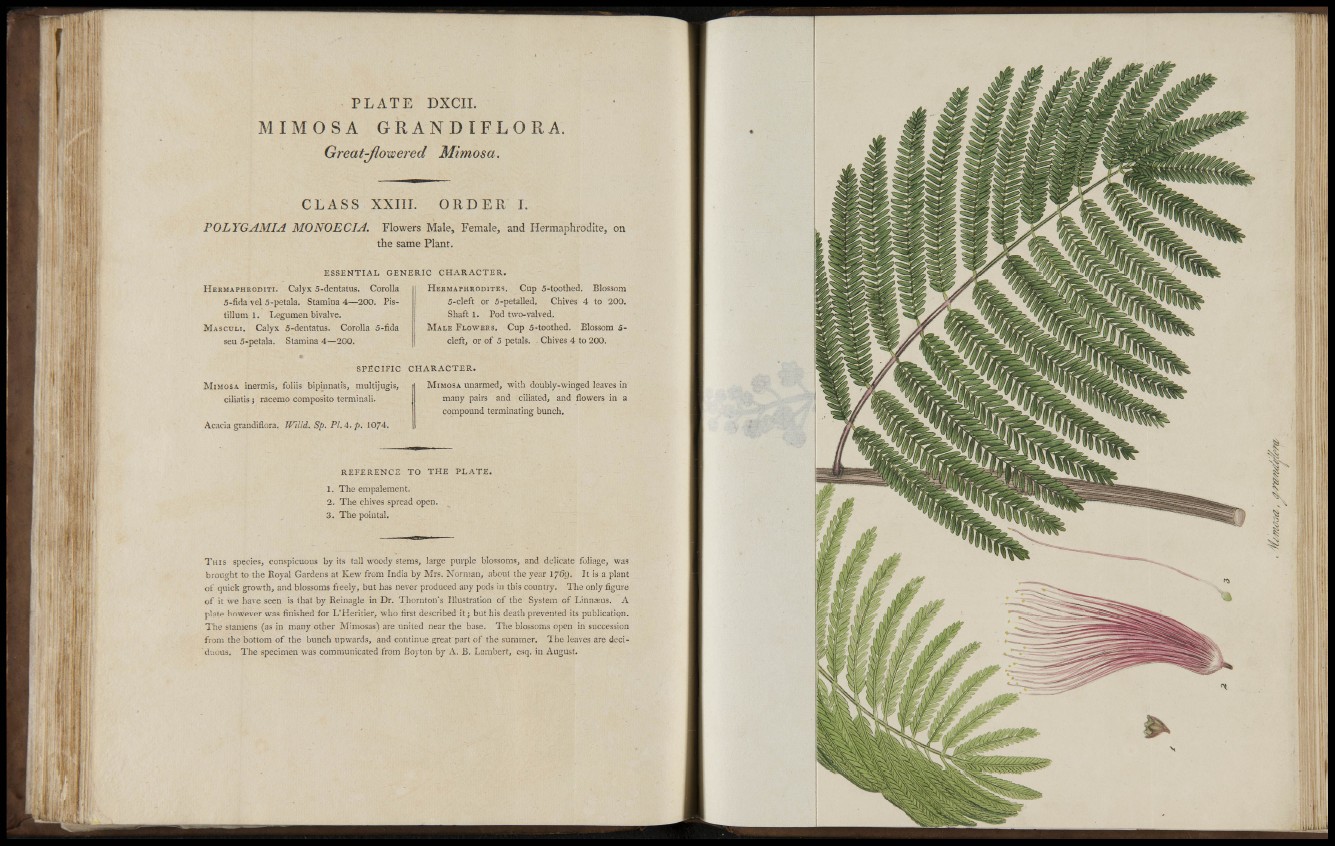
; •• ! 1
"ili,
''
: I ' ' T •
• in!
•iS::-.
lit?
li -(I
'¡m
¡il; - 6
w ;. •• r;
ft '
III 14"' ;
( : I
i l
PLATE DXCII.
M I M O S A GRANDIFLORA.
Great-^0~issered Mimosa.
CLASS XXIIL ORDER I.
POLYGAMIA MONOECIA. Flowers Male, Female, and Hermaphrodite, on
the same Plant.
ESSENTIAL GENERIC CHARACTER.
HERMAPHRODITI. Calyx 5-dentatus. Corolla
5-fida vel S-petala. Stamina 4—200. Pistilluni
1. T.egumeii bivalve.
MASCULI. Calyx 5-dentatus. Corolla 5-tida
seu S-petala. Stamina 4—200.
HEKMAPHRODITE«;. Cup 5-toothed. Blossom
5-cleft or 5-petalled. Chives 4 to 200.
Shaft 1. Pod two-valved,
MALE FLOWERS. Cup 5-toothed. Blossom 5-
cleft, or of 5 petals. Chives 4 to 200.
SPECIFIC CHARACTER.
MIMOSA inermis, foliis bipinnatis, multijugis,
ciliatis ; racemo composito terminali.
MIMOSA unarmed, with doubly-winged leaves in
many pairs and ciliated, and flowers in a
compound terminating bunch.
Acacia grandiflora. IFilìd. Sp. Pl.4. p. 10/4.
REFERENCE TO THE PLATE.
1. The empalement.
2. The chives spread open.
3. The pointai.
THIS species, conspicuous by its tall woody stems, large purple blossoms, and delicate foliage, was
brought to the Royal Gardens at Kew from India by Mrs. IS^ornian, about the year 1769. It is a plant
of quick growth, and blossoms fieely, but has never produced any pods in this country. The only figure
of it we have seen is that by Reinagle in Dr. Thornton's Illustration of the System of Linnaeus. A
plate however was finished for L'Heritier, who first described it; but his death prevented its publication.
The stamens (as in many other Mimosas) are united near the base. The blossoms open in succession
from the bottom of the bunch upwards, and continue great part of the summer. Ihe leaves are deciduous.
The specimen was communicated from Boyton by A. B. Lambert, esq. in August.
lis
ijj M
I- '
i'1.1 !
^ i
V
A
§ ""
ijllr
t ;
. 'i!